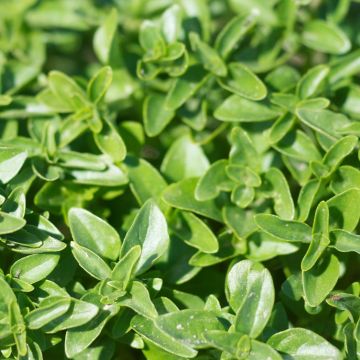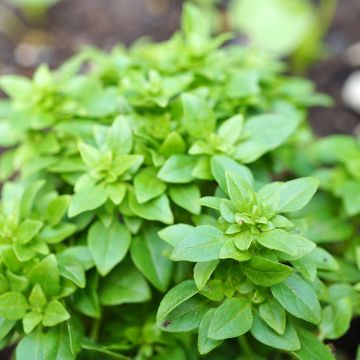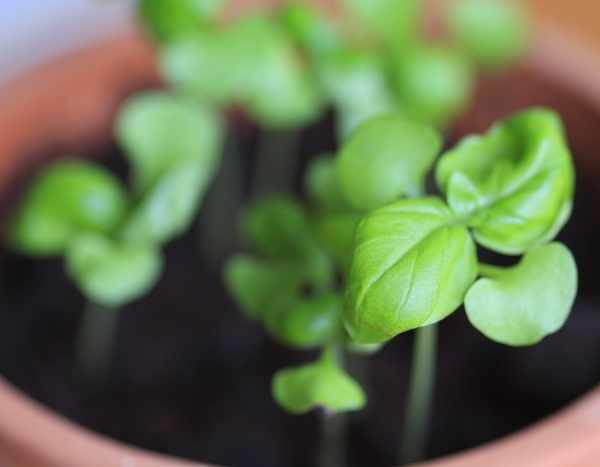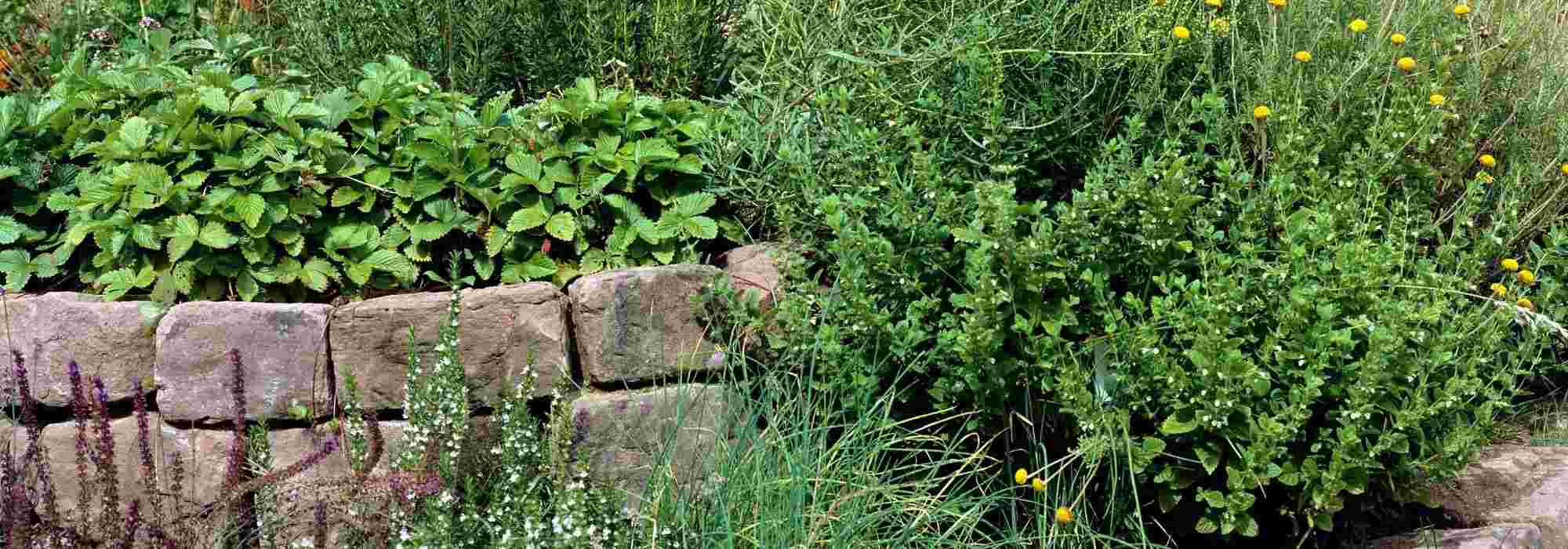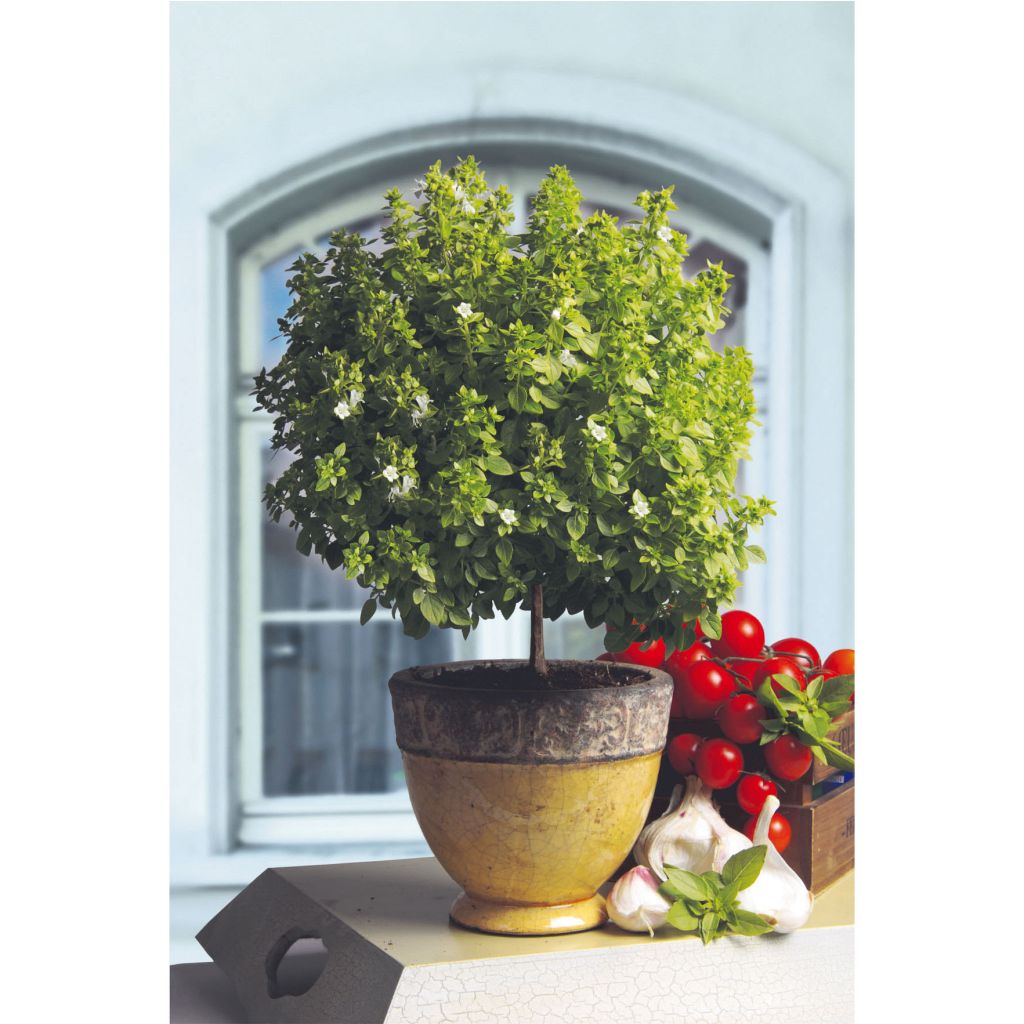

Basilic El Greco greffé en plants - Ocimum basilicum
El Greco Basil GRAFTED plants - Ocimum basilicum
Ocimum basilicum El Greco
Sweet Basil, Common Basil, Garden Basil, Saint Joseph's Wort
Maybe my care wasn't perfect... I will go back to growing large and medium-sized basil leaves next year.
LUCIE W., 07/10/2017
Special offer!
Receive a €20 voucher for any order over €90 (excluding delivery costs, credit notes, and plastic-free options)!
1- Add your favorite plants to your cart.
2- Once you have reached €90, confirm your order (you can even choose the delivery date!).
3- As soon as your order is shipped, you will receive an email containing your voucher code, valid for 3 months (90 days).
Your voucher is unique and can only be used once, for any order with a minimum value of €20, excluding delivery costs.
Can be combined with other current offers, non-divisible and non-refundable.
Why not try an alternative variety in stock?
View all →This plant carries a 6 months recovery warranty
More information
We guarantee the quality of our plants for a full growing cycle, and will replace at our expense any plant that fails to recover under normal climatic and planting conditions.
Description
This grafted El Greco Basil is a variety with a very compact ball-shaped habit, with fine and fragrant leaves. Use the leaves to flavour salads, marinades, or make pesto. Basil is an annual aromatic plant that requires warmth to grow. It can be grown in pots or in the ground, depending on the climate. Plug plants of this grafted variety can be planted from April to June, after the last frost. Grafting allows for a faster and more abundant harvest.
The grafting technique involves giving a desired variety (here, 'El Greco') the root system of another specially selected variety, called the rootstock. This rootstock has excellent resistance to soil parasites and diseases, which provides the plant with extra vigour: it becomes more resistant to challenging external conditions (such as cold climates) and will yield significantly more than a non-grafted plant. Fruit production starts earlier and lower on the main stem in grafted plants.
Except for a few perennial varieties, Basil is an herbaceous annual plant native to India, reaching a height of 30 to 50 cm (12 to 20in) depending on the variety. It has upright, branched stems with a square cross-section, like most Lamiaceae plants. The ovate leaves, usually green, are highly aromatic and commonly used in Mediterranean cuisine, especially Italian. There are many varieties, some with leaves that emit scents of lemon, cinnamon, licorice, thyme, and more. Some varieties have purple foliage.
Basil is sensitive to cold and requires temperatures above 15°C (59°F) to grow. It can be grown in pots or in the ground, depending on the climate, and prefers sunny and sheltered locations. Fun fact: Basil repels mosquitoes and carrot flies!
In the kitchen, Basil leaves pair perfectly with tomato salads, pasta dishes, and are used to make pesto.
Harvesting: It should be done as needed, preferably in the morning.
Storage: It is best to consume the fresh leaves quickly to fully enjoy their fragrance. You can also place them in a bottle of olive oil to flavour your dressings. For longer storage, you can freeze or dry basil leaves, although they will lose some of their aroma.
Gardener's tip: We recommend mulching the soil with thin layers of grass clippings, ideally mixed with dead leaves. This protective layer helps keep the soil moist, limiting the need for watering, and also reduces weed growth.
Harvest
Plant habit
Foliage
Other Basil
View all →Planting and care
Planting:
In open ground:
First, allow the plants to grow by transplanting the plug plants into 8 to 13 cm (3 to 5in) diameter pots filled with compost. Attention: When transplanting grafted plants, do not bury the graft point! Place the plants in a warm and bright location. Water regularly.
Planting in open ground should be done in May or June, when the risk of frost has passed. Basil likes rich and well-drained soils. Choose a sheltered and sunny location (or partially shaded if your summers are very hot). Soak the root ball in water for a few moments before planting. Space the plants 25cm (10in) apart in all directions. Dig a hole, position your plant with the graft point at ground level, and cover with fine soil. Water thoroughly. During cultivation, hoe and weed regularly.
In a pot:
Planting can be done from April to June. Soak the root ball in water for a few moments before planting. Place a layer of gravel or clay pellets at the bottom of the pot to facilitate drainage. Fill the pot with a mixture of compost, garden soil, and sand. Gently insert the plug plant and cover with fine soil. Take note: When transplanting grafted plants, do not bury the graft point! Water thoroughly. The pot can be placed indoors in a bright location or outdoors in the sun.
Maintenance:
Trim the flower stems before they bloom.
Pinch the tips of the stems when they reach about 15 cm (6in) in height to encourage branching.
Water at the base regularly. For pot cultivation, do not let water accumulate in the saucer.
Cultivation
Care
Intended location
Planting & care advice
-
, onOrder confirmed
Reply from on Promesse de fleurs
Similar products
Haven't found what you were looking for?
Hardiness is the lowest winter temperature a plant can endure without suffering serious damage or even dying. However, hardiness is affected by location (a sheltered area, such as a patio), protection (winter cover) and soil type (hardiness is improved by well-drained soil).

Photo Sharing Terms & Conditions
In order to encourage gardeners to interact and share their experiences, Promesse de fleurs offers various media enabling content to be uploaded onto its Site - in particular via the ‘Photo sharing’ module.
The User agrees to refrain from:
- Posting any content that is illegal, prejudicial, insulting, racist, inciteful to hatred, revisionist, contrary to public decency, that infringes on privacy or on the privacy rights of third parties, in particular the publicity rights of persons and goods, intellectual property rights, or the right to privacy.
- Submitting content on behalf of a third party;
- Impersonate the identity of a third party and/or publish any personal information about a third party;
In general, the User undertakes to refrain from any unethical behaviour.
All Content (in particular text, comments, files, images, photos, videos, creative works, etc.), which may be subject to property or intellectual property rights, image or other private rights, shall remain the property of the User, subject to the limited rights granted by the terms of the licence granted by Promesse de fleurs as stated below. Users are at liberty to publish or not to publish such Content on the Site, notably via the ‘Photo Sharing’ facility, and accept that this Content shall be made public and freely accessible, notably on the Internet.
Users further acknowledge, undertake to have ,and guarantee that they hold all necessary rights and permissions to publish such material on the Site, in particular with regard to the legislation in force pertaining to any privacy, property, intellectual property, image, or contractual rights, or rights of any other nature. By publishing such Content on the Site, Users acknowledge accepting full liability as publishers of the Content within the meaning of the law, and grant Promesse de fleurs, free of charge, an inclusive, worldwide licence for the said Content for the entire duration of its publication, including all reproduction, representation, up/downloading, displaying, performing, transmission, and storage rights.
Users also grant permission for their name to be linked to the Content and accept that this link may not always be made available.
By engaging in posting material, Users consent to their Content becoming automatically accessible on the Internet, in particular on other sites and/or blogs and/or web pages of the Promesse de fleurs site, including in particular social pages and the Promesse de fleurs catalogue.
Users may secure the removal of entrusted content free of charge by issuing a simple request via our contact form.
The flowering period indicated on our website applies to countries and regions located in USDA zone 8 (France, the United Kingdom, Ireland, the Netherlands, etc.)
It will vary according to where you live:
- In zones 9 to 10 (Italy, Spain, Greece, etc.), flowering will occur about 2 to 4 weeks earlier.
- In zones 6 to 7 (Germany, Poland, Slovenia, and lower mountainous regions), flowering will be delayed by 2 to 3 weeks.
- In zone 5 (Central Europe, Scandinavia), blooming will be delayed by 3 to 5 weeks.
In temperate climates, pruning of spring-flowering shrubs (forsythia, spireas, etc.) should be done just after flowering.
Pruning of summer-flowering shrubs (Indian Lilac, Perovskia, etc.) can be done in winter or spring.
In cold regions as well as with frost-sensitive plants, avoid pruning too early when severe frosts may still occur.
The planting period indicated on our website applies to countries and regions located in USDA zone 8 (France, United Kingdom, Ireland, Netherlands).
It will vary according to where you live:
- In Mediterranean zones (Marseille, Madrid, Milan, etc.), autumn and winter are the best planting periods.
- In continental zones (Strasbourg, Munich, Vienna, etc.), delay planting by 2 to 3 weeks in spring and bring it forward by 2 to 4 weeks in autumn.
- In mountainous regions (the Alps, Pyrenees, Carpathians, etc.), it is best to plant in late spring (May-June) or late summer (August-September).
The harvesting period indicated on our website applies to countries and regions in USDA zone 8 (France, England, Ireland, the Netherlands).
In colder areas (Scandinavia, Poland, Austria...) fruit and vegetable harvests are likely to be delayed by 3-4 weeks.
In warmer areas (Italy, Spain, Greece, etc.), harvesting will probably take place earlier, depending on weather conditions.
The sowing periods indicated on our website apply to countries and regions within USDA Zone 8 (France, UK, Ireland, Netherlands).
In colder areas (Scandinavia, Poland, Austria...), delay any outdoor sowing by 3-4 weeks, or sow under glass.
In warmer climes (Italy, Spain, Greece, etc.), bring outdoor sowing forward by a few weeks.










































